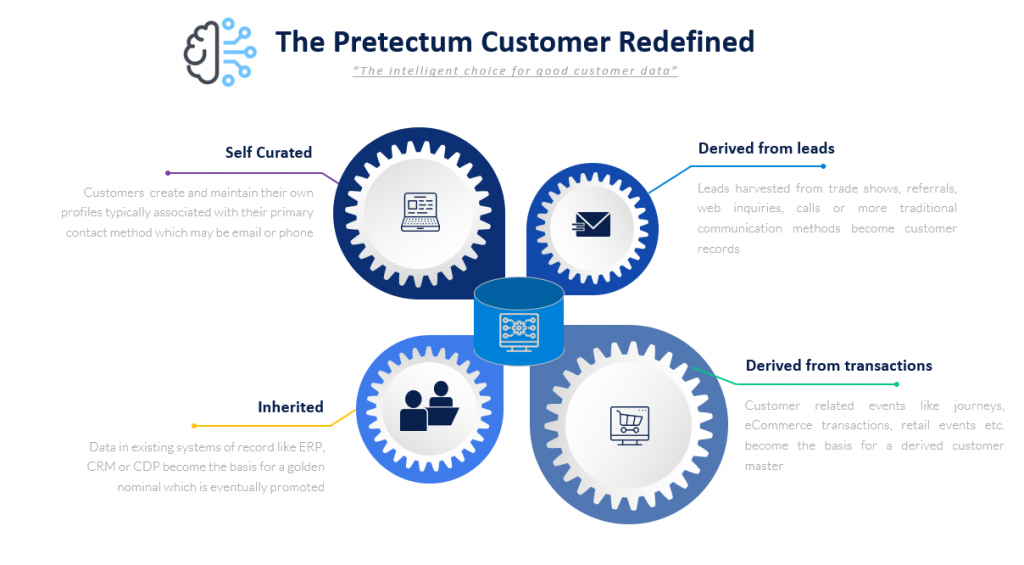The Importance of Comprehensive and Correct Customer Data
Consumer data helps companies a great deal to improve nearly every aspect of their business. With proper data analytics and a data-driven marketing approach, brands are able to gain actionable customer insights, generate quality leads and increase customer loyalty, among other things.
According to a survey done by Harvard Business Review, 58% of enterprises have experienced a hike in customer retention and loyalty by making the right use of customer analytics.
Elevating the quality of your customer data can benefit your business in a number of ways and here are a few thoughts on aspects you might want to consider:
The enhanced customer experience (CX): There is evidence to suggest that businesses that are customer-centric tend to be way ahead of their competitors. To follow a customer-driven approach, you need access to comprehensive customer-specific data. The gathered and enhanced customer data can be useful in being able to understanding and predicting customer behaviour which in turn can be used to improve customer experience through customized offerings, messaging, interaction and services. Without the data, it is hard to provide anything more than a generic message or offer which may not resonate.
Precise targeting and lead generation accompanied with a lower CAC: Effective marketing can translate into a shorter sales cycle, greater sales volume, or appeal to a wider customer audience. For a marketing campaign to be effective though, it needs to have good data to support the estimation of the potential target market or market segment. Having good customer data opens up the opportunity to segment based on customer demographics, showing where the customers are, their age group, their gender, education, likely income, potential disposable income, and other critical traits that you might consider for targeting.

Drawing customers in for multiple engagements or appealing to new customers is made more likely with comprehensive and correct customer data that allow your business to focus on customer-characteristic-based marketing strategies to generate quality leads.
According to Thomas Griffin Co-Founder and President of OptinMonster in a piece on Forbes – customer acquisition cost (CAC) can be lowered if you have the right targeted message aimed at the right audience, whether it be PPC or contact-based marketing campaigns. To have that message, you need to know something about your audience, particularly if you’re running contact-based campaigns
Brand Improvement: Customer feedback and reviews form an important part of customer data but for this kind of data to be really useful, it needs to be tied to the best possible customer master data. To run effective customer review and survey data analytics you want to be able to paint a complete picture of respondents. Survey submissions that support uncovering the strengths and weaknesses of your brand and offerings can be effective in isolation by conveying a sense of general measures of customer satisfaction but they ultimately reduce their usefulness without reference to customer data.
Survey responses may impair your ability to derive maximum value from responses by being unable to tie them back to the respondent’s lifetime customer value. The CLV model informs you on whether the commenting customers are actually high-value customers or one-off customers who bought on a deal or opportunistically and that may never buy from you again.
Tools matter: we’ve talked about tools before, principally tools like your Customer Data Platform (CDP) and Customer Relationship Management (CRM) solution where you store large amounts of data and consumer profiles. You may even have an ERP (Enterprise Resource Planning) system or a CDM (Customer Data Management) platform. Your business may in fact have all of these., but the question of whether they are fit for purpose or suitable for all the jobs that your business needs to undertake needs to be carefully considered.
We’ve observed that there is a lot of enthusiasm about using AI for data collection accompanied by scraping tools and social media trawlers and transaction aggregators to increase the volume of data collected. What we’ve also observed is that some of the fundamentals of knowing your customer remain missing or incomplete. This is partially due to poor data collection, collation, and assessment processes but it is also a function of the nature of the tools. Some tools are better suited to transaction processing, interaction or engagement, etc. Very few of the tools that we’ve mentioned, are suited to mastery of the digital customer and if they are, it is typically in the service of a specific application objective.
Customer data is presently experiencing a revolution in the business world. Data for every kind of business, from B2B sales and eCommerce brands to digital content creators, service and hospitality, healthcare and financial services, and a number of others too. All depend on gaining a source of appropriate and correct customer data to increase their leads, opportunities, and ultimately business., Knowing the audience, creating personalized marketing strategies, generating quality leads, and reaching a wider audience is the brass ring that leads to business success.
There is no exaggeration in saying that in today’s world of digital advancement, your company cannot survive without the best possible proper and relevant customer data. We believe you can achieve that with a Customer Master Data Management (CMDM) platform like that offered by Pretectum.
Contact us today for more information.


